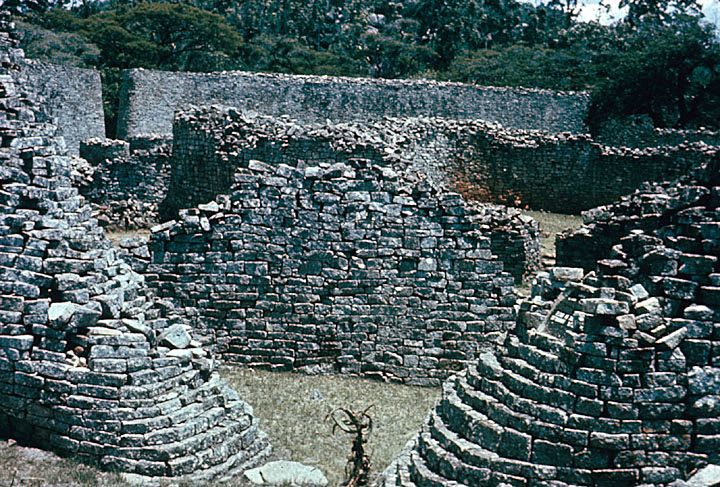Great Zimbabwe was a prehistoric African city that was highly influential due to its wealth, military strength, and economic advantage. In addition, it was symbolic for its large walls and tower, which surrounded the city.
The city was a commercial capital of the African trading empire between the 11th and the 15th centuries; due to its wealth, it controlled the entire Southern and Eastern African coast within that period.
Great Zimbabwe is located in modern-day Masvingo, Zimbabwe. The city was the capital of the Kingdom of Zimbabwe, which was a Shona (Bantu) trading empire. In the ancient Shona dialect, the word Zimbabwe means “stone houses.”
Inhabitants of Great Zimbabwe migrated into the area around 1100 C.E. but abandoned it in the 15th century after its fall. All that is left of this great city today are some stone remains, which show what looks like a great enclosure, a royal residence, and a grain storage facility.
But what are the intricacies that contributed to the rise of Great Zimbabwe, and what ultimately made it fall? Let’s find out!
The Rise of Great Zimbabwe
Great Zimbabwe was a prominent part of an extensive and wealthy global trading network in pre-colonial Africa. As far back as the 11th century, inhabitants of the city were in direct trade with China, Persia, and the Middle East.
The rulers and elite of the Zimbabwe Empire were responsible for controlling trade channels along the east African coast.
Great Zimbabwe got its massive wealth mainly from cattle production and gold. However, a study claims that the rulers of Great Zimbabwe did not have direct control over the gold mines but were in charge of it as middlemen who managed and charged a commission on trade.
They based their economy on cattle husbandry, crop cultivation, and the trade of gold on the coast of the Indian Ocean. Great Zimbabwe was the heart of a thriving trading empire from the 11th to the 15th centuries.
The city also had a unique tax structure that enabled citizens to pay for tax with their labour if there was a financial constraint. The unique labour-for-tax system contributed immensely to building the great walls and towers of Great Zimbabwe.
By 1200 C.E., the city had grown in strength and was a paramount religious and trading center.
The Fall of Great Zimbabwe
By the 15th century, Great Zimbabwe was completely abandoned by its inhabitants – the Shona people, who migrated to other parts. Sources claim that overpopulation which led to the exhaustion of resources, was a major factor responsible for the abandonment.
Around 1450, Great Zimbabwe experienced political instability, famine, and water shortages caused by climate change. There was also exhaustion of gold mines, and business boomed up north, attracting Arab traders away from Great Zimbabwe.
The shifting of trade to the far north, which was majorly a result of religious affiliation, affected Great Zimbabwe's economy in no small way. Soon, their resources were used up, and there was a shortage in the land.
Most of what was left of Great Zimbabwe, especially its artifacts, were looted by European visitors in the 20th century.
What Remains of Great Zimbabwe Today
The archaeological site at Great Zimbabwe consists of several sections. The first section is the Hill Complex, a series of structural ruins that sit atop the steepest hill on the site. This is generally believed to have been the religious center of the site. The Hill Complex is the oldest part of Great Zimbabwe and shows signs of construction that date to around 900 C.E.
The ruins of Great Zimbabwe were designated a United Nations Educational, Scientific and Cultural Organization (UNESCO) World Heritage Site in 1986.
Leave a Comment
Sign in or become a Africa Rebirth. Unearthing Africa’s Past. Empowering Its Future member to join the conversation.
Just enter your email below to get a log in link.


Related News
Congo’s Unfinished Revolution: Patrice Lumumba and the Struggle for Sovereignty
Jun 01, 2025
When Oil Was Worth More Than Lives: Britain’s Role in the Biafran War
May 31, 2025
How Mozambique Broke Free from 500 Years of Portuguese Rule
May 30, 2025